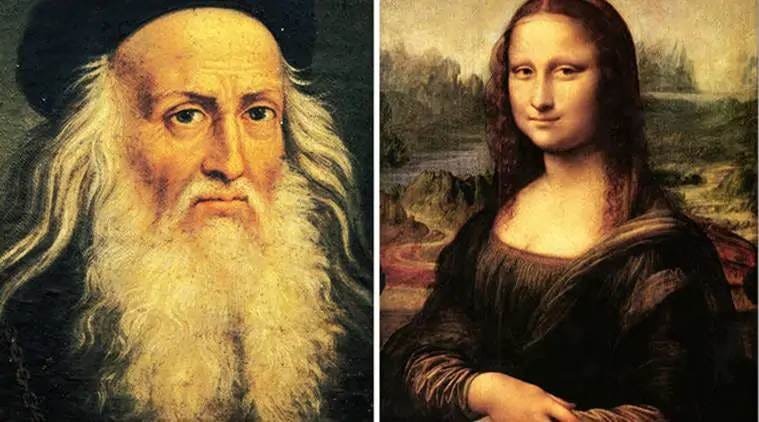Leonardo da Vinci’s genius profoundly impacted art, science, and innovation, shaping how generations approach the human form and storytelling. His works, blending scientific observation and artistic mastery, continue to inspire reinterpretations, including mosaics, paintings, and modern reproductions. However, there is a degree of ambiguity when considering the Mosaic of Cana in relation to Leonardo. Despite Leonardo’s significant contributions to religious art, particularly through his famous works like The Last Supper, no historical records or well-documented artworks directly associate him with a mosaic specifically depicting the biblical scene of the Wedding at Cana. This raises an intriguing question: Is the Mosaic of Cana a modern artistic interpretation inspired by Leonardo’s influence, or is it perhaps a misattribution, connecting the scene to his broader artistic legacy? Alternatively, it could be a lesser-known artwork that draws on his style and techniques.
The Wedding at Cana: A Masterpiece Often Mistakenly Linked to Leonardo da Vinci
One possible connection is The Wedding at Cana, a monumental painting created in 1563 by Venetian artist Paolo Veronese. The Louvre houses this masterpiece, which depicts the biblical wedding feast where Jesus turned water into wine. nterestingly, viewers often associate the two iconic works together because the museum displays it alongside Leonardo’s Mona Lisa. Although da Vinci did not create The Wedding at Cana, his innovative use of perspective, light, and composition influenced many Renaissance artists, including Veronese.
Mosaic Interpretations of Leonardo da Vinci’s Masterpieces
This famous fresco, painted between 1495 and 1498 in Milan, has been reproduced in various forms, including mosaics. This famous fresco, painted between 1495 and 1498 in Milan, has been reproduced in various forms, including mosaics. Translating da Vinci’s work into mosaic form shows how his revolutionary religious art continues to inspire and reimagine generations. Mosaics, known for their intricate use of small, colored tiles, offer a distinct way to capture the depth, light, and emotion characteristic of Leonardo’s style. If a Mosaic of Cana exists, it could serve as a modern homage to da Vinci’s lasting artistic influence, showcasing how his masterful attention to human emotion, anatomical precision, and perspective has left an indelible mark on religious art.
Leonardo da Vinci’s Influence on Religious Art and Mosaic Adaptations
Given da Vinci’s deep impact on religious art, mosaics might reflect his Renaissance style,
even without his direct involvement. His influence shaped countless artists. His mastery of perspective and emotion transformed religious art, inspiring future artists to explore sacred stories through mosaics.
Unraveling the Mystery: The Enduring Influence of Leonardo da Vinci’s Legacy
Though The Mosaic of Cana isn’t da Vinci’s work, it sparks discussion on his lasting influence across diverse artistic forms. From paintings to mosaics, his influence extends beyond his original works, shaping how later artists depict biblical and historical themes. If such a mosai reflects da Vinci’s style, further research must trace its origins, meaning, and Renaissance-inspired artistic influence.
Does a Mosaic of Cana by Leonardo da Vinci Exist?
While there is no widely known mosaic created by Leonardo da Vinci himself related to Cana, two major artworks often come up in discussions:
- The Wedding at Cana (1563) by Paolo Veronese – This grand painting, displayed in the Louvre Museum, illustrates the biblical event where Jesus turned water into wine. Although da Vinci did not create it, people often mention it alongside his Mona Lisa, since the museum displays both masterpieces in the same room.
- Artists around the world have recreated many of Leonardo da Vinci’s famous paintings, such as The Last Supper and The Mona Lisa, as mosaics in various locations. It is possible that a mosaic of The Wedding at Cana exists, inspired by the grandeur of Renaissance art.
Leonardo da Vinci’s Influence on Religious Art
Leonardo da Vinci revolutionized Renaissance religious art by combining deep human emotion with divine themes, transforming artistic conventions. In works like The Last Supper, he introduced psychological depth and realism, capturing Christ’s final meal’s tension and emotion. Leonardo’s study of anatomy, light, and perspective enabled lifelike figures, making spiritual stories feel immediate and deeply human. This shift from static symbolism to dynamic depictions bridged the divine and human, reshaping how artists communicated religious themes.
Mosaic Art in Renaissance Influence
For centuries, mosaics have served as a powerful medium, depicting religious, cultural, and historical events in stone and glass. Although Leonardo da Vinci mainly worked with oil paints and frescoes, his influence has extended well beyond these mediums. Over time, mosaic artists have reinterpreted and adapted Leonardo’s masterpieces into intricate tiled compositions, paying homage to his innovative style. A Mosaic of Cana reflecting Leonardo’s approach would demonstrate the enduring power and timeless influence of Renaissance art. Such a piece would show how Leonardo’s legacy inspires new interpretations of religious themes, blending tradition and Renaissance ideals
Conclusion
In conclusion, The Mosaic of Cana and Leonardo da Vinci’s masterpieces reveal the evolving connection between Renaissance art, religion, storytelling. The Mosaic of Cana preserves Christian symbolism, while Leonardo’s Last Supper introduced humanism and psychological depth to religious narratives. Both pieces, though different in form and style, connect divine mystery with human experience through symbolism, emotion, and naturalism. Studying these works together reveals artistic diversity in religious art and deepens understanding of faith, devotion, and human experience.

